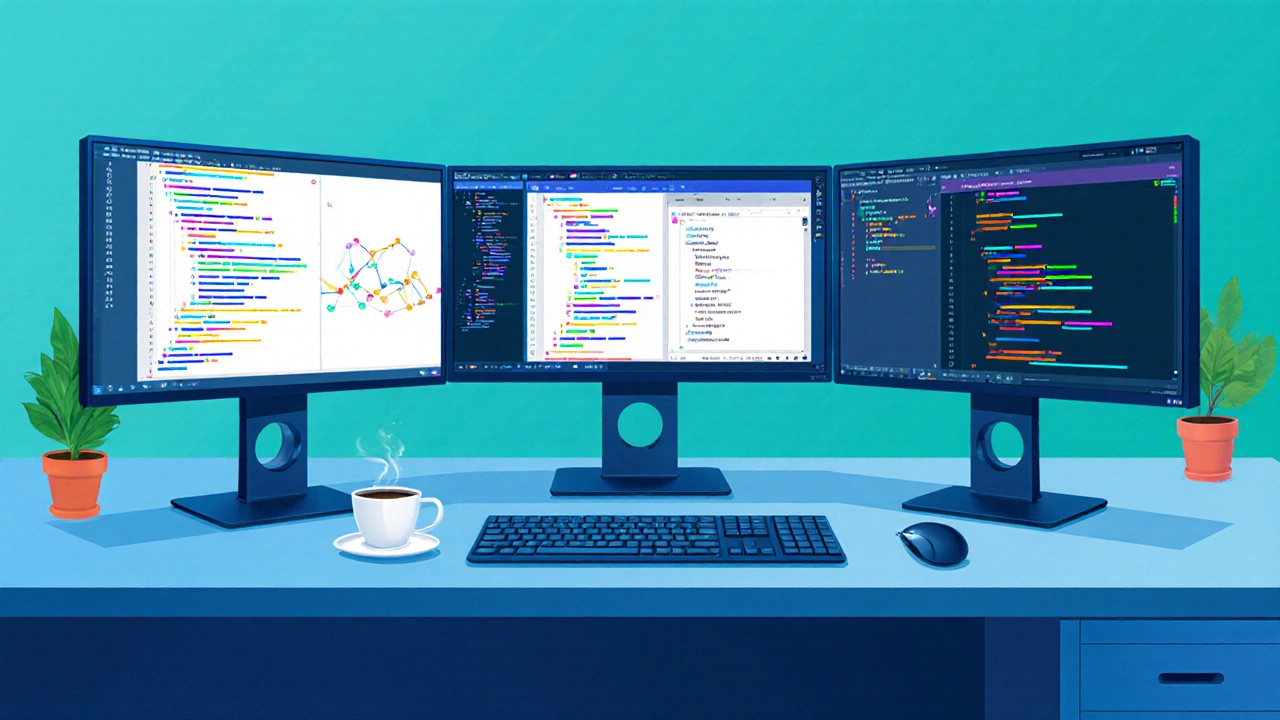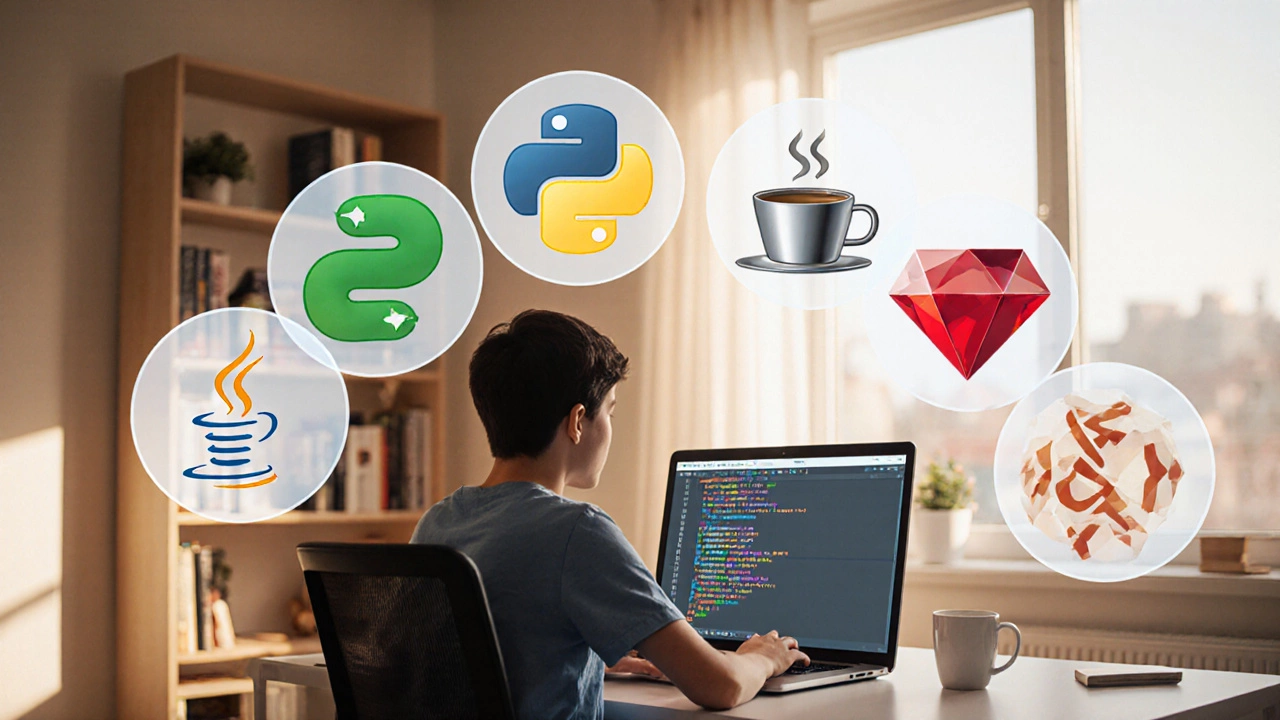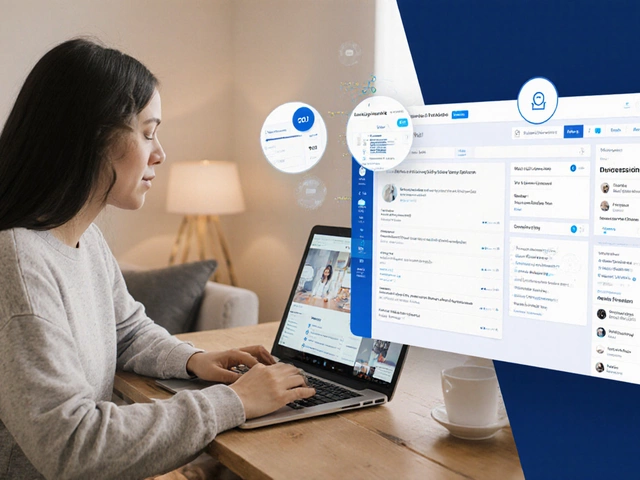Programming language is a set of rules and symbols that tells a computer how to perform tasks. Choosing the right one as your first step can feel like a gamble, especially when dozens of options promise "easy" learning curves and high salaries. This guide cuts through the hype, lays out the key factors you should weigh, and matches the most beginner‑friendly languages to common career goals. By the end you’ll know exactly which code to start with and how to dive in without getting stuck.
Quick Takeaways
- Python tops the list for absolute beginners thanks to simple syntax and huge community support.
- If you want to build websites fast, JavaScript is the only language you’ll need on the front end.
- Java and C# are solid choices for enterprise jobs and Android or Windows development.
- Ruby shines for rapid web prototypes but its job market is smaller.
- Align your first language with the type of product you want to create - web, data, mobile, or games.
Factors to Weigh Before Picking a Language
Not all languages serve the same purpose, so start by answering a few practical questions:
- Career goal: Do you see yourself building websites, analyzing data, creating mobile apps, or developing games? Different languages dominate each niche.
- Learning curve: Some languages read almost like plain English, while others demand understanding of memory management and complex syntax.
- Community and resources: A big, active community means more tutorials, forums, and open‑source libraries.
- Job market demand: Look at recent hiring data - salaries, number of openings, and regional demand.
- Tooling and environment: Free IDEs, online sandboxes, and one‑click deployment options can speed up early progress.
These criteria form a decision matrix that you can score each language against, making the choice feel less like a gut feeling and more like a data‑driven decision.
Top Five Beginner‑Friendly Languages
Below are the languages that consistently rank high on ease of learning, job availability, and community support.
Python is a high‑level, interpreted language praised for its readable syntax - almost like writing English sentences. It powers data science, web back‑ends (Django, Flask), automation scripts, and even some game prototypes. According to the 2024 Stack Overflow Developer Survey, Python topped the “most loved” category for the sixth year running.
JavaScript is the only language that runs natively in every web browser, making it essential for front‑end development. Modern frameworks like React, Vue, and Angular let you build interactive sites with minimal setup. Node.js also lets you use JavaScript on the server side, so you can become a full‑stack developer without learning a second language.
Java has been the workhorse for enterprise back‑ends, large‑scale Android apps, and financial services platforms. Its “write once, run anywhere” promise comes from the Java Virtual Machine (JVM) that abstracts away operating‑system differences.
C# (pronounced C‑sharp) is Microsoft’s answer to Java, tightly integrated with the .NET ecosystem. It’s the go‑to language for Windows desktop apps, Unity game development, and increasingly for cloud services via Azure.
Ruby shines with its elegant syntax and the Rails framework, which lets you spin up a web app in a weekend. While its market share has shrunk, Ruby still offers a gentle learning curve and a tight-knit community.

Side‑by‑Side Comparison
| Language | Ease of Learning | Typical Use Cases | Average Salary (US) 2025 | Community Size |
|---|---|---|---|---|
| Python | Very Easy | Data Science, Web Back‑end, Automation | $115k | Large |
| JavaScript | Easy | Web Front‑end, Full‑stack, Server‑side (Node.js) | $110k | Very Large |
| Java | Medium | Enterprise Back‑end, Android, Cloud Services | $120k | Large |
| C# | Medium | Windows Apps, Unity Games, Azure Cloud | $118k | Large |
| Ruby | Easy | Web Apps (Rails), Prototyping | $105k | Medium |
Match a Language to Your Dream Project
Think of the kind of software you’d love to build. Here’s a quick map:
- Web development: Start with JavaScript for the front end and add Python or Ruby for the back end.
- Data science: Python wins thanks to libraries like pandas, NumPy, and TensorFlow.
- Mobile apps (Android): Java or Kotlin (a Java‑compatible language) is the industry standard.
- Mobile apps (iOS): Swift is the native choice, but if you’re already comfortable with JavaScript, React Native lets you target both platforms.
- Game development: C# with Unity offers a low barrier to entry and a massive asset store.
- Desktop utilities or automation: Python or C# provides rapid scripting with rich standard libraries.
Getting Started - Resources, Practice, and Projects
Once you’ve picked a language, the next step is to build muscle memory.
- Free interactive platforms: Codecademy, freeCodeCamp, and Scrimba let you code in the browser and see instant feedback.
- Online courses (paid but high quality): Coursera’s "Python for Everybody", Udemy’s "The Complete JavaScript Course", and Pluralsight’s Java path.
- Project ideas for beginners:
- Python - a personal expense tracker that reads CSV files.
- JavaScript - a to‑do list web app using local storage.
- Java - a simple Android app that displays a random quote.
- C# - a Unity 2D game where you catch falling objects.
- Ruby - a blog platform built with Sinatra or Rails.
- Join a community: Reddit’s r/learnprogramming, Stack Overflow tags, or local meetups (e.g., Cape Town’s Code Club).
- Track progress: Use a spreadsheet or a Trello board to log completed tutorials, bugs fixed, and features added.
Remember, the goal isn’t to finish every tutorial but to create something tangible you can show to future employers or peers.
Common Pitfalls and Pro Tips
Even the best‑chosen language can feel daunting if you stumble into these traps:
- Skipping fundamentals: Jumping straight into frameworks leaves gaps in core syntax. Spend at least 2 weeks on pure language basics.
- Copy‑pasting without understanding: It’s easy to steal code from Stack Overflow, but you’ll hit a wall when you need to adapt it. Rewrite examples in your own words.
- Over‑loading with tools: IDEs like VS Code are great, but installing every plugin at once can overwhelm you. Start with a basic setup and add extensions as needed.
- Neglecting version control: Even a solo project benefits from Git. It teaches you how to rollback mistakes and collaborate later.
- Comparing yourself to others: Learning speed varies. Focus on personal milestones, not how fast a peer finishes a course.
Pro tip: Adopt the "20‑hour rule" - dedicate at least 20 focused hours to a language before judging its difficulty. Most beginners see a noticeable skill jump after that threshold.
When to Switch Languages
If you reach a point where:
- Your project outgrows the language’s ecosystem (e.g., you need low‑level performance),
- You want to specialize in a niche that favors a different stack (e.g., deep learning with Python vs. high‑frequency trading with C++),
- You’ve mastered the fundamentals and crave new paradigms (functional programming, static typing),
it’s perfectly fine to add another language to your toolkit. The first language you learn builds a mental model of programming that transfers to any new syntax.
Frequently Asked Questions
What is the easiest language for absolute beginners?
Python is widely regarded as the most beginner‑friendly language because its syntax reads like plain English, it has extensive libraries, and the community offers countless free tutorials.
Should I learn JavaScript before I learn Python?
It depends on your goal. If you aim to build websites, start with JavaScript since it runs in the browser. If you prefer data analysis or automation, Python is a better first step. You can always pick up the other later.
How long does it take to become job‑ready in a new language?
Most learners reach a competent level after 3‑4 months of consistent practice (10‑12 hours per week) and a portfolio of small projects. Real‑world internships or freelance gigs can shorten the timeline.
Do I need a computer science degree to learn these languages?
No. All five languages listed have free resources that cover everything from basics to advanced topics. A degree helps with theory, but practical coding skills are learned by doing.
What’s more valuable for a résumé: a language or a framework?
Start with a solid grasp of the core language. Employers look for fluency in fundamentals before evaluating framework expertise. Once comfortable, add popular frameworks (React for JavaScript, Django for Python) to showcase applied skills.




